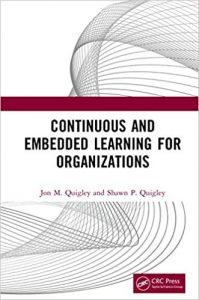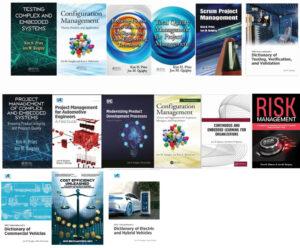Audits: Types, Benefits, and Common Problems
Introduction
by Jon M Quigley
In today’s complex business environment, we have a variety of audit types to ensure accountability, transparency, and compliance. This article explores the types of audits, their benefits, and the frequent challenges organizations encounter. Whether preparing for an audit or considering implementing one, understanding these aspects is essential.
Why Audits Are Performed
Audits are essential tools for evaluating and improving various aspects of an organization. They serve multiple purposes, each designed to enhance transparency, efficiency, and compliance. We take action in business and product development to achieve some objectives. That objective may be fiscal or regulatory (company or product). Organizations must adhere to laws, regulations, and industry standards to operate legally and avoid penalties. Compliance audits verify these obligations are met, especially in highly regulated industries like healthcare, finance, and manufacturing.
We believe we understand and know the inner workings of our company. We set up incentives within the organization to encourage certain behaviors. However, those incentives almost always encourage other conflicting behaviors. The objectives we set for the organization and inducements to achieve will encourage other undesirable behavior. For example, a bonus for a project completed on time will create pressure to achieve that goal. It may promote cutting corners on the defined and expected processes to achieve those objectives. Audits help identify these issues and associated risks, such as operational inefficiencies, fraud, or cybersecurity vulnerabilities. By uncovering these risks, organizations can take proactive steps to mitigate them and avoid costly consequences.
Audits evaluate an organization’s internal controls to ensure they effectively prevent errors, fraud, and inefficiencies. This helps safeguard assets and maintain operational integrity. Operational audits assess processes and workflows to identify inefficiencies and recommend improvements. Audits allow organizations to reduce costs, streamline operations, and achieve better results. A clean audit report demonstrates accountability and transparency, which boosts confidence among stakeholders such as investors, customers, and regulatory bodies. An audit that finds nonconformances informs the management of areas for improvement. In general, audits provide data-driven insights that inform strategic decisions. For example, understanding financial health or operational weaknesses can guide resource allocation and long-term planning. Audits are performed not only as a compliance requirement but also as a strategic tool to improve overall organizational performance and resilience.
Types of Audits
Based on Purpose
- Internal Audits (First-Party): Conducted within an organization to assess its operations, compliance, and risk management practices.
- External Audits (Third-Party): Performed by independent entities to provide an objective assessment, often for regulatory or certification purposes.
- Supplier Audits: Focused on assessing vendors’ or suppliers’ quality, compliance, and performance.
- Customer Audits: Conducted by customers to ensure suppliers meet contractual and regulatory requirements.
Based on Scope
- Full-Scope Audits: Comprehensive reviews of an organization, project, or process, covering all aspects of operations and compliance.
- Limited-Scope Audits: Targeted reviews of specific areas, processes, or departments.
Based on Function
- Financial Audits: Evaluate the accuracy of financial records, compliance with accounting standards, and the effectiveness of internal controls.
- Operational Audits: Assess the efficiency and effectiveness of operations and identify opportunities for improvement.
- Compliance Audits: Verify adherence to laws, regulations, standards, and internal policies.
- IT Audits: Focus on the security, reliability, and efficiency of an organization’s IT systems and data management.
- Environmental Audits: Evaluate compliance with environmental laws and the effectiveness of sustainability initiatives.
- Health and Safety Audits: Assess workplace safety practices and compliance with occupational health and safety regulations.
Based on Industry/Standards
- Quality Audits: Assess compliance with quality management standards, such as ISO 9001.
- Energy Audits: Evaluate energy consumption and identify opportunities for efficiency improvements.
- Food Safety Audits: Focus on compliance with food safety standards, such as HACCP or ISO 22000.
- Supply Chain Audits: Assess the supply chain’s performance, compliance, and risks.
Based on Timing
- Scheduled Audits: Planned and conducted regularly (e.g., annual or quarterly audits).
- Unscheduled Audits: Conducted without prior notice, often to ensure compliance and deter misconduct.
- Surprise Audits: Performed unexpectedly to provide a real-time snapshot of operations and controls.
Based on Methodology
- Process Audits: Focus on the effectiveness and efficiency of specific processes.
- Product Audits: Assess the quality and compliance of products against standards or specifications.
- System Audits: Review the adequacy and implementation of management systems (e.g., quality, environmental, or safety systems).
Special Audits
- Forensic Audits: Investigate specific issues, such as fraud or embezzlement.
- Value-for-Money Audits: Assess whether resources are being used economically, efficiently, and effectively.
- Ethical Audits: Evaluate compliance with ethical standards, labor laws, and corporate social responsibility practices.
- Risk-Based Audits: Focus on areas with the highest potential risks to the organization.
Prerequisites
Organizational Prerequisites
- Clear Objectives: Audits must have well-defined goals, such as compliance, performance improvement, or risk mitigation.
- Established Scope: The boundaries and focus areas of the audit should be explicitly stated to ensure relevance and effectiveness.
- Management Support: Strong commitment from leadership ensures the audit process is taken seriously and that findings are acted upon.
- Access to Resources: Auditors need sufficient time, budget, and access to tools, data, and personnel to perform their duties effectively.
- Defined Criteria: Standards, regulations, and benchmarks must be established to evaluate performance and compliance accurately.
- Independence and Objectivity: Auditors should operate free from bias or undue influence to maintain the integrity of their assessments.
Prerequisites Related to Auditor Capability and Talents
Technical Competence
- Knowledge of Standards and Regulations: Auditors must understand the applicable laws, regulations, and standards relevant to the audit’s scope (e.g., ISO standards, financial regulations, safety codes).
- Industry Expertise: Familiarity with the industry ensures that auditors can accurately evaluate processes, systems, and risks.
- Process Knowledge: A deep understanding of the specific processes, systems, or areas being audited is crucial for identifying nonconformance or inefficiencies.
Analytical Skills
- Critical Thinking: The ability to analyze complex information, identify patterns, and assess risks objectively.
- Problem-Solving: Capacity to identify root causes of issues and propose actionable solutions.
- Attention to Detail: Precision in reviewing documentation, data, and operations to ensure no critical issues are overlooked.
Communication Skills
- Clarity in Reporting: The ability to present findings clearly and concisely, ensuring stakeholders understand the implications.
- Interpersonal Skills: Strong interpersonal skills to build trust, encourage openness, and foster collaboration with auditees.
- Constructive Feedback: Delivering feedback in a way that highlights areas for improvement without alienating the auditees, including handling sensitive issues tactfully.
Integrity and Professionalism
- Ethical Conduct: Adherence to ethical principles, including confidentiality, impartiality, and honesty.
- Objectivity: Avoiding personal biases or external pressures that could compromise audit findings.
- Commitment to Continuous Learning: Staying updated with industry standards, regulations, and best practices changes.
Organizational Skills
- Time Management: Effectively managing time to cover all aspects of the audit within the allotted schedule.
- Planning and Coordination: Preparing audit plans, coordinating with stakeholders, and allocating resources efficiently.
Technological Proficiency
- Familiarity with Audit Tools: Knowledge of software and digital tools that facilitate data collection, analysis, and reporting.
- Understanding of IT Systems: For audits involving IT or cybersecurity, auditors must have technical knowledge of systems, networks, and data management.
Process Prerequisites
- Risk-Based Approach: Focusing on areas with the highest potential impact or likelihood of nonconformance.
- Clear Methodology: Following a structured process, including planning, execution, reporting, and follow-up.
- Collaborative Engagement: Involving stakeholders to ensure transparency and buy-in throughout the audit process.
- Effective Follow-Up: Ensuring corrective actions are implemented and verified after the audit.
Benefits of Audits
- Improved Transparency and Accountability: Audits provide an independent review, ensuring stakeholders that the organization operates with integrity.
- Enhanced Risk Management: By identifying potential risks, audits help organizations develop strategies to mitigate them effectively.
- Regulatory Compliance: Compliance audits help organizations meet industry standards and avoid legal penalties.
- Process Optimization: Operational and internal audits uncover inefficiencies and provide recommendations for improvement.
- Increased Stakeholder Confidence: A clean audit report boosts investor and customer trust, strengthening the organization’s reputation.
Frequent Problems in Audits
- Incomplete Documentation: Organizations often struggle to provide adequate records, leading to delays and additional scrutiny.
- Lack of Preparedness: Unprepared teams and systems can complicate the audit process and affect outcomes.
- Resistance to Change: Employees may view audits as intrusive, leading to pushback against recommendations.
- Over-reliance on Manual Processes: Organizations using outdated systems face inefficiencies and inaccuracies, making audits more challenging.
- Miscommunication: Poor communication between auditors and the organization can lead to misunderstandings and missed findings.
- Organization culture: A culture that does not hold clear communication and delivers undesired news in high regard will either water down the feedback or discourage accurate reporting.
Conclusion
Audits are a critical component of business management, offering insights into operations, compliance, and growth opportunities. By understanding the types of audits and their benefits and addressing frequent problems, organizations can leverage audits to drive success.
For more information, contact us:
Follow us on social media at:
Amazon Author Central https://www.amazon.com/-/e/B002A56N5E
Follow us on LinkedIn: https://www.linkedin.com/in/jonmquigley/
https://www.linkedin.com/company/value-transformation-llc




